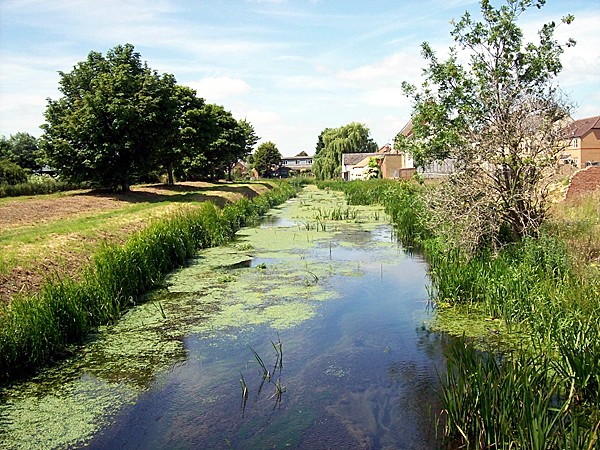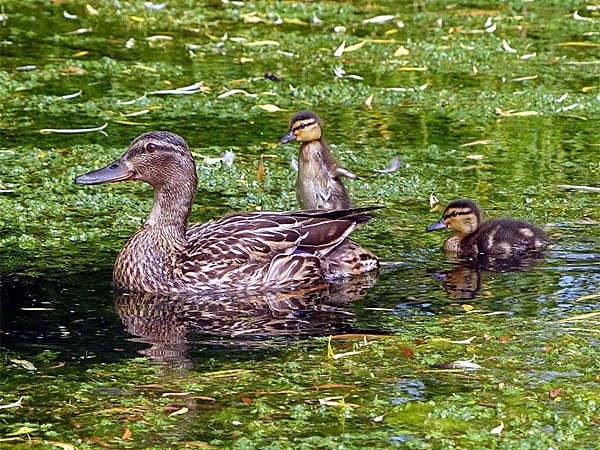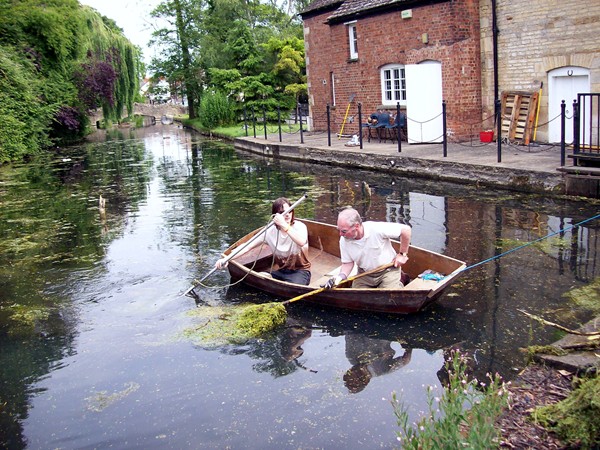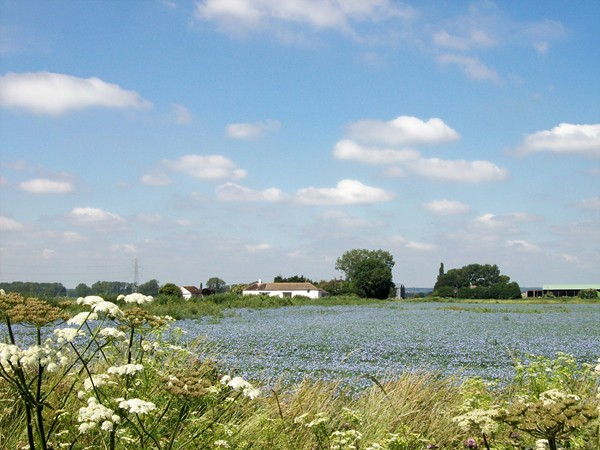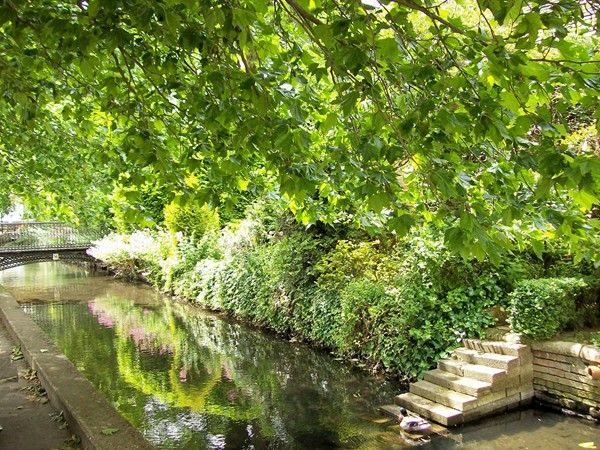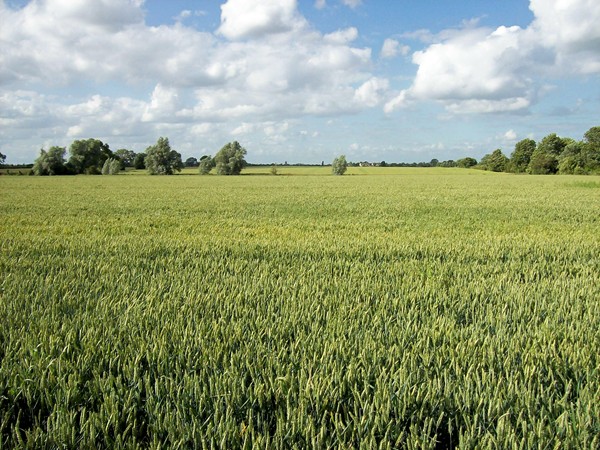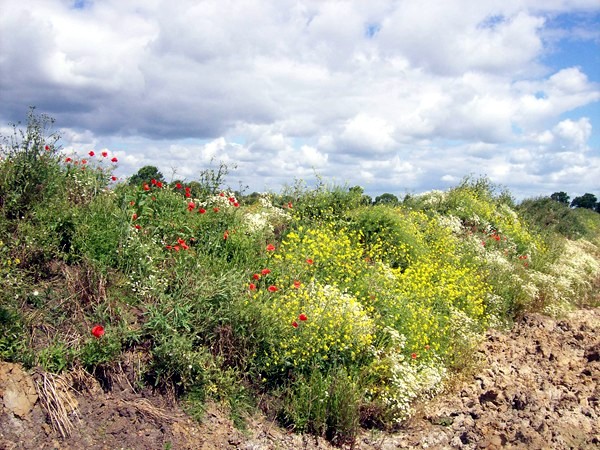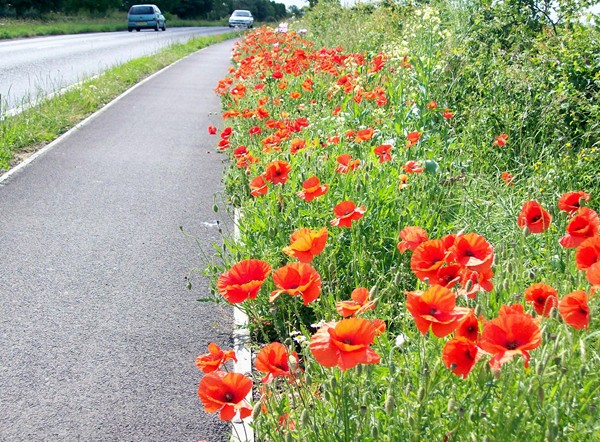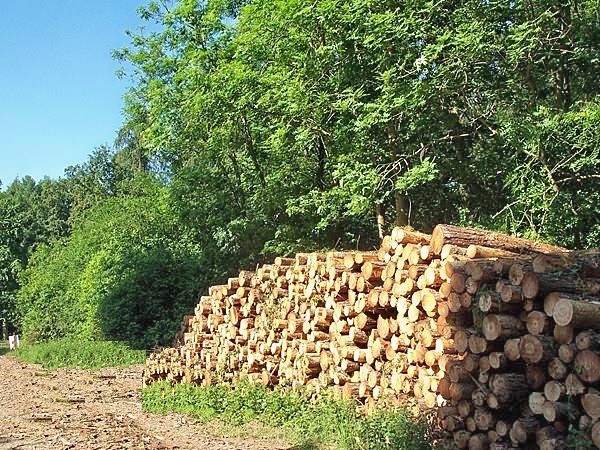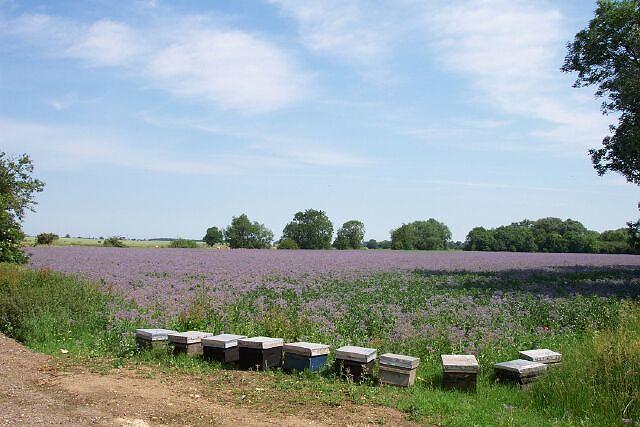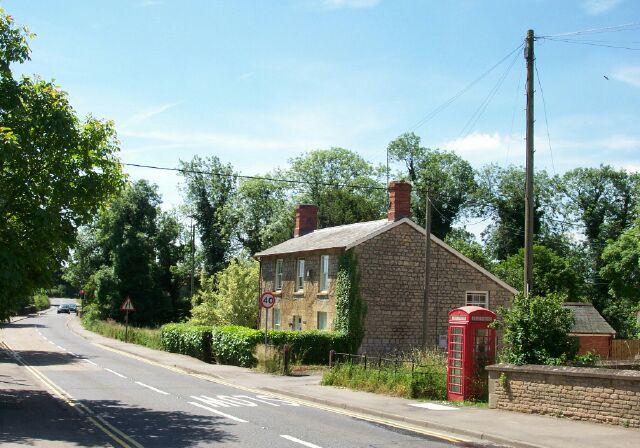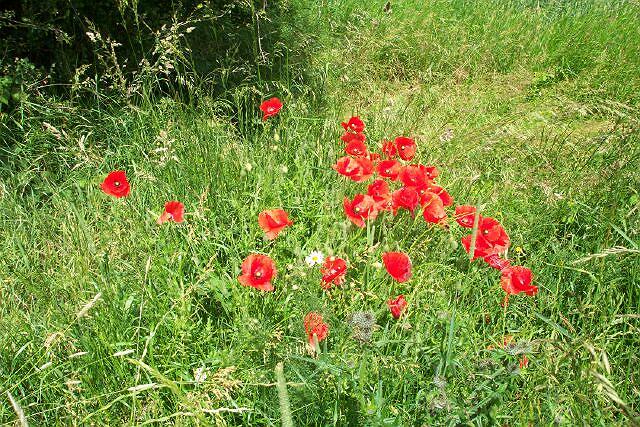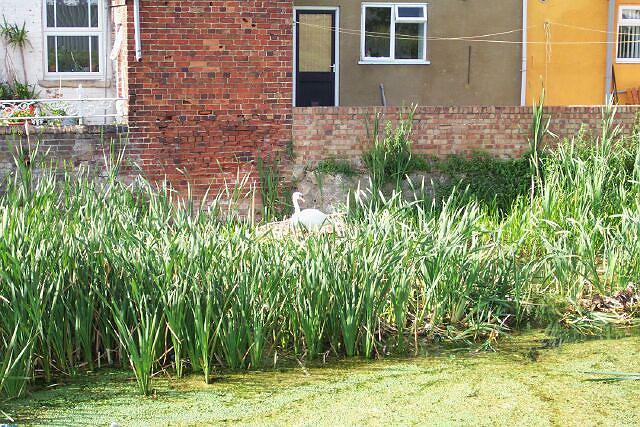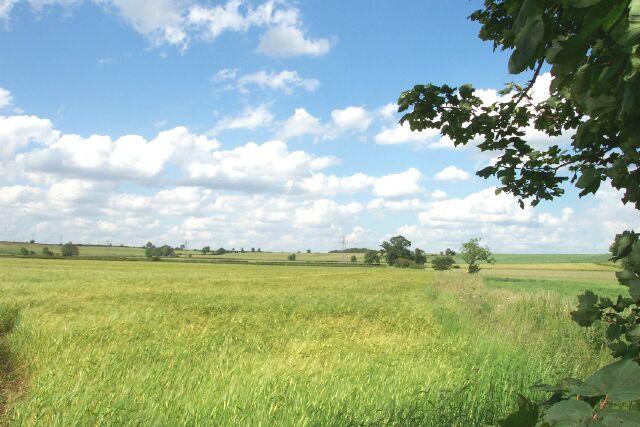|
June
Sunday 30th June 2013: Gangs of workers were recruited during the early 18th century to strengthen the banks and clear the weeds along this stretch of the Bourne Eau behind Eastgate to make it fit for navigation and by 1743 the work had been completed to allow large boats sail upstream from the North Sea carrying cargoes of coal from Sunderland and wood from the Continent, returning loaded with hides and grain, and a massive warehouse was built for the storage of these commodities in transit. Today, the river has returned to its neglected state yet still has the potential for a useful life once it attracts the attention of enterprising developers with the vision of what this spot can offer such as waterside apartments and leisure activities.
Thursday 20th June 2013: Mallard (Anas platyrhynchos) are our commonest ducks and those that inhabit the Bourne Eau which flows around the Wellhead Gardens in South Street, just a short step from the town centre, are a constant delight for visitors, especially at this time of the year when they are busy rearing their young, always well-behaved and following their parents in an orderly fashion. Here, a recent arrival appears to be hitching a ride although photographer Geoff Bell assures me that this is not the case but an optical illusion because the duckling just happened to be behind its mother treading water as he clicked the camera.
Wednesday 15th June 2011: After several dry months, the rain is back with intermittent showers most days which is a welcome relief to farmers whose parched fields have been showing signs of the drought that has been threatening their crops. But the weather remains changeable with bright sunshine one minute and storm clouds gathering the next, a dramatic sight under our wide fenland skies such as here in the north of Bourne towards Dyke village.
Wednesday 30th June 2010: Jim Jones of the Civic Society (right) and volunteer, Ben Harris, aged 24, are seen clearing algae from the surface of the Bourne Eau behind Baldock's Mill in South Street in readiness for the East Midlands in Bloom competition which is due to be judged in a few weeks' time. The boat, called St Peter, was constructed by pupils and staff at the Robert Manning College in 2002 to assist with the cleaning of St Peter's Pool and the river and is now in the care of the Heritage Centre which is based at the early 19th century mill and used regularly to remove weeds and debris from the waterway. This particular spot is expected to be on the inspection route to be taken by the judges and the Civic Society is anxious that the river should look its best for the occasion.
Tuesday 30th June 2009 We have lost many of our wild flowers through intensive farming practice but some of the hardier species have survived the chemical sprays used to control weeds and can be seen springing up around Bourne, usually confined to the field's edge. Here in Manning Road, Bourne, just a step away from the built up area, ox-eye daisies, thistles, poppies and mallow are blooming in profusion along a farm track to delight passers-by, their bright colours contrasting with the vibrant green of the corn crop beyond and the blue sky over the horizon.
Tuesday 23rd June 2009: The fen may be flat and sometimes featureless but it never lacks interest and there is much to see in these productive acres that are devoted entirely to agriculture. This is the South Fen at Bourne that has been farmed since the earliest times and controlled by drainage that has been perfected in the past two centuries for the growing of a multitude of crops such as potatoes, sugar beet and cereals which thrive in the rich, black soil. Flax too is becoming fairly frequent although the blue flowers that blossom in early summer are still an unusual sight to some.
Thursday 18th June 2009: The Bourne Eau runs underground for much of its length through the town but in those places where it can be seen it does provide an attractive water feature such as here in Church Walk. The steps lead to Bourne Eau House and the iron bridge at the far end was erected in 1832 by the Mawby family who lived there during the 19th century. This place is one of the most secluded in Bourne with the west front of the Abbey Church nearby while the river gives an added attraction, especially on a sunny day in early summer with mallard and moorhen for company.
Wednesday 25th June 2008: The countryside around Bourne is full of fields of green corn at this time of the year because this is the crop for which Lincolnshire is famous, being the country’s largest producers of cereals with more than half a million acres devoted to wheat alone which is almost 12% of the national total. The plants began as shoots in the spring and are now knee high, a wonderful sight under a changing fenland sky of sun and cloud, but soon it will start to ripen, turning the landscape a golden yellow and then we will hear the hum of the combines as the crop is safely gathered in for another year. This picture was taken from my back garden with Dyke village and the 15th century tower of St John the Baptist Church at Morton on the horizon.
Thursday 19th June 2008: Earthworks on construction sites throw up dormant seeds which seize the opportunity to flower again and bring a fresh burst of colour to the countryside. This farmland in Meadow Drove, between Dyke village and the main Spalding Road, has recently been excavated as part of a £2.7 million project by Anglian Water to lay a new reinforcement main between Bourne and Guthrum to improve supplies to customers in the area. Come spring and the banks thrown up on either side of the trench have burst into flower with poppies, ox-eye daisies and other hardy species to delight passing motorists with a reminder that despite the intensive use of agricultural chemicals, many plants will survive.
Wednesday 4th June 2008:
Trees struggle to survive in a farming landscape where they are
perpetually at risk from intensive agriculture and for some it is only a
matter of time before they fall victim to a high wind or even a bolt of
lightning. I last photographed this old ash on Swallow Hill, near Thurlby,
two miles south of Bourne, in September 2001, its branches denuded of life
either through age, changes in the water table or root damage due to
constant ploughing, yet it remains, surrounded by a fading crop of oil
seed blossom, clinging to life with new leaves bursting forth every
spring and standing like a gnarled old sentinel to remind us that nature is a powerful
force that will not easily succumb. Thursday 21st June 2007: Poppies are among the most resilient of our wild flowers, retreating stubbornly against the onslaught of agro-chemicals that annually try to keep them at bay, and can still be seen blooming at the field's edge and on roadside verges where they have escaped the sprays, providing a splash of colour for passing motorists such as here alongside the main A15 at Morton, three miles north of Bourne. Poppy seeds will lie dormant for many years, waiting for a chance of renewal, so becoming a feature of disturbed land such as road works and new housing estates, the footpath here being re-laid in recent years, or more memorably, in the fields of Flanders during the Great War of 1914-18 when trenches were dug as fortifications and so the flowers that sprang up became an emblem for those who died in that terrible conflict.
Thursday 8th June 2006: Visitors associate Bourne Wood with pleasant walks and birdsong but despite these popular leisure activities these 400 acres are also managed by the Forestry Commission for the production of timber as well as conservation and recreation. Ever since they bought the land from the Marquess of Exeter in 1926, it has been a valuable source of income and although the forest was heavily felled in the past, notably to provide props for the trenches during the Great War of 1914-18, the industry is now strictly controlled and carried out in conjunction with an extensive re-planting programme to ensure that the woodland survives as a natural habitat for the flora and fauna that make this such a magical place to be, whatever the season.
Tuesday 28th June 2005: Bees love borage and if you walk into a field of it at this time of the year you will find them at their busiest. Borage (Borago officinalis) is a herb with brilliant blue, star-like flowers and greyish-green leaves and may be seen growing during the summer months on banks and in hedges. It can be used for many purposes, the young leaves in salads or infused to make a refreshing drink. The flowers will add flavour to a claret cup and can be candied to decorate confectionery while honey is also an excellent by product. I found this specially planted crop at Wilsthope, four miles south of Bourne, where a local bee keeper had moved ten of his portable hives, each containing flourishing colonies of several thousand bees, to the field's edge to take advantage of the sudden abundance of nectar created by the flowers and will no doubt soon be reaping the benefit with many jars of much sought after Lincolnshire borage honey.
Friday 24th June 2005: The villages of South Lincolnshire look their best on hot summer days and it is a pleasure to visit them, particularly Edenham, three miles to the north west of Bourne, which has retained much of its charm from past centuries. Recent installations such as unsightly cables and supporting posts do mar the skyline although the red telephone kiosk has found an affectionate place in the street scene. This road is the A151, once a cart track but the double yellow lines and traffic lights regulating vehicles crossing the narrow stone bridge on the left are a reminder that it is now the main route between Bourne and the Great North Road, bringing a regular flow of cars and lorries through what was once a quiet and secluded corner of England.
Friday 20th June 2002: There seem to be more poppies around in the countryside this year, mainly at the edge of fields where they have been missed by the crop sprayers, and they are always a delightful sight on a hot summer's day with a backdrop of green corn. There are also small patches on the roadside verges, such as those here which I found today on the road between Elsthorpe and Bulby, north of Bourne, with an intrusive ox-eye daisy joining the company. Poppies are the most resilient of our wild flowers and certainly the most colourful and to see them in profusion is a reminder of what we have lost to intensive farming and agro-chemicals.
Tuesday 10th June 2003: The Bourne Eau runs south from the town behind the houses in Eastgate and then out into the fen where it joins the River Glen. This stretch of water could be one of the most attractive spots in Bourne but the scene is invariably marred because of rubbish and a lack of maintenance along the waterway although the grass and weeds on the south bank have been cut in recent weeks to provide easy access for walkers. The state of the river does not seem to deter the mute swans that have made their home here and this one has built its nest immediately outside someone's back door while nearby is the beer terrace of the Anchor Inn and so it is fairly certain that its diet is supplemented by a regular supply of crisps and morsels of bar food.
Tuesday 3rd June 2003: Bourne Wood is full of paths and tracks, some well-trodden and others hardly used and leading either to a secluded and secret glade or perhaps to nowhere except a dense thicket. This is the charm of this place because each outing is different for the adventurous who are prepared to explore those areas they have not been in or seen before. But no matter where you are in this forest, you are never far from a place to sit down, a necessity for the older generation and the sight of a seat in the distance spurs you on to greater effort to reach it. These wooden benches have been erected by the Forestry Commission at strategic intervals to enable visitors sit and stay awhile and take in the surroundings and some have brass plates placed here by relatives and friends as a reminder of loved ones who once walked these paths but have since died and what better memorial to those who found such pleasure in walking these woodland ways.
Saturday 22nd June 2002: Wild roses abound in the English countryside at this time of the year and can be found in the woods and hedgerows alongside the roadside verges around Bourne in great numbers. They look so fragile yet some have the most delicate and exquisite scent but it is dangerous to pick them because they are protected by razor-sharp, hooked prickles that can tear into the skin of the unwary. There are several species but the most familiar is the dog-rose (Rosa canina), a wild ancestor of the garden rose which was the symbol of the Tudor kings of England but it is thought to derive its name from an ancient Greek belief that it would cure a person who had been bitten by a mad dog. The flowers can be shell-pink or white and their stems arch and scramble in the hedgerow and twine their way around the trees in the woods. When the petals fall, red berry-like fruit or hips form and these can be made into jelly and syrup because they are rich in Vitamin C. During World War Two, when nourishing food was scarce, the government sent us kids out into the hedgerows to collect them and in 1943 alone, some 500 tons of rose hips were amassed in this way and processed to provide children with rose hip syrup as a supplement to the meagre diet that resulted from food rationing. Today, this vast natural commodity is mostly left to the birds. We found these wild roses on one of the country lanes near Braceborough, four miles south west of Bourne, and stopped for some time to enjoy their company.
Tuesday 18th June 2002: Frequent rain in recent weeks has ensured that our countryside has maintained the lush green colour that we expect in England at this time of the year but now the cereal crops have started to ripen and the first tinges of gold and yellow are beginning to appear. We found this field of barley this evening in the undulating farmland near Braceborough, to the south west of Bourne, part of the corn belt of South Lincolnshire that regularly produces high yield crops. The bearded, nodding heads of barley have a soft appearance in the field which contrasts with the crispness of wheat and there is less of it of because more barley is grown in Britain than any other arable crop. It is more tolerant of climate and therefore more widespread, providing an excellent animal feed and around 75% of the annual output is converted into meat, milk and eggs, often without even leaving the farm and goes straight from the combine into the feed hoppers.
Tuesday 11th June 2002: I found this neglected grave in Bourne cemetery today and wondered why it had not been preserved in better order because it is that of a woman who left her money for the benefit of the town. This grave is the last resting place of Emma Searson, an 87-year-old widow who died in 1934 and left an estate worth £440,000 by today's values, much of it to charity and the fund established in her name still produces an income which is spent for the good of the community. Yet her grave is neglected and overgrown and the tombstone has toppled over, hiding her name and the inscription, while weeds sprout to obliterate her last resting place.
Monday 10th June 2002: The fine weather we have come to expect in June has eluded us so far this month and we have been into a prolonged period of intermittent wind, rain and cold. But every cloud has a silver lining and these erratic meteorological conditions have brought with them changing skies that can be seen at their best over the flat fenland landscape that is a common feature of the countryside around Bourne. One of the most stunning views is from my first floor study window overlooking farmland between the northerly outskirts of the town and Dyke village and the past few days have brought a kaleidoscope of pattern and colour illustrating every imaginable cloud formation as the rain gives way to sun and back again, sometimes several times in each hour. There are those who say that the fens are flat and boring but perhaps they have never looked upwards to see such an open and unending skyscape.
Sunday 2nd June 2002: Most home owners take a pride in their gardens and try to provide a splash of colour during the spring and summer months and a walk through the streets of Bourne at this time of the year will provide many attractive examples, with flower beds enhanced by the purchase of bedding plants and hanging baskets from the garden centres. Our own route through the streets for a frequent evening walk takes us past a garden where the perimeter is lined with roses that skirt the footpath for several yards and at this time of year they provide a galaxy of colour and a nosegay of scent for this gardener knows his business and tends his plants with loving care, pruning them carefully in the autumn and nurturing them through their flowering period. We always stop and admire this tapestry of reds and yellows, oranges and whites, and to enjoy the bouquet that they cast upon the evening air, for these are roses at their very best and here they are in a private garden and yet planted in a position for every passer-by to enjoy.
Thursday 14th June 2001: The days when May turns into June are the most worthwhile time to be alive and there is always enjoyment to be had walking out in the early morning and seeing the countryside bursting into new life with a green freshness that you cannot find at any other time of the year. We are now seeing the May blossom in profusion and its bitter sweet scent is everywhere, in country lanes, meadow paths and woodland rides, where hedgerows are covered with clusters of small white flowers that are the very essence of springtime. Add a carpet of golden buttercups and the idyllic scene is complete as it is here near Dyke village, just a mile north of Bourne. This is also the season of hope for better things to come and so as we walk these ways and revel in the sight and smell of these simple but beautiful flowers, our pace slows because we wish to enjoy them to the full and we are reluctant to see them fade. We therefore seek them out most days for unless you find them at the moment of their best, they will be gone for another year and such is the feeble grasp that we all have on life, we cannot depend that we will be here next year to see them again.
Friday 15th June 2001: Hawthorn hedges make good wind breaks if they are left to grow to their full height and I found one here along the field's edge on the outskirts of Braceborough, near Bourne, where this year it is protecting a crop of wheat.
Thursday 21st June 2001: A mass of burgeoning leaves and grass adorn the banks of the East Glen River at Braceborough, four miles south of Bourne, a tranquil scene that has endured for many centuries past although the persistent use of agro-chemicals has cost us most of our wild flowers. This is part of England's green and pleasant land, the rural landscape evocatively described by the painter, poet and mystic William Blake (1757-1827), and one that is remembered with a deep affection and nostalgia by all who have lived here and are now far from home. In spite of the poor treatment it gets from some farmers, our countryside retreats stubbornly in the face of such adversity although it has changed for the worse in a single lifetime. At this season of the year, it still bursts forth to give us another magnificent display but unless these practices are moderated, we cannot expect such resistance to continue indefinitely.
Go to: Main Index Villages Index |
